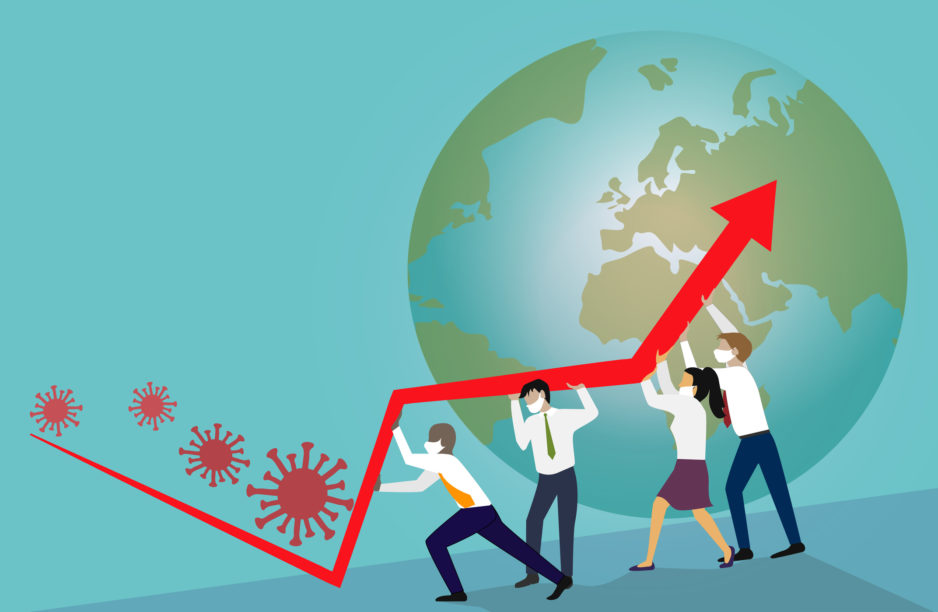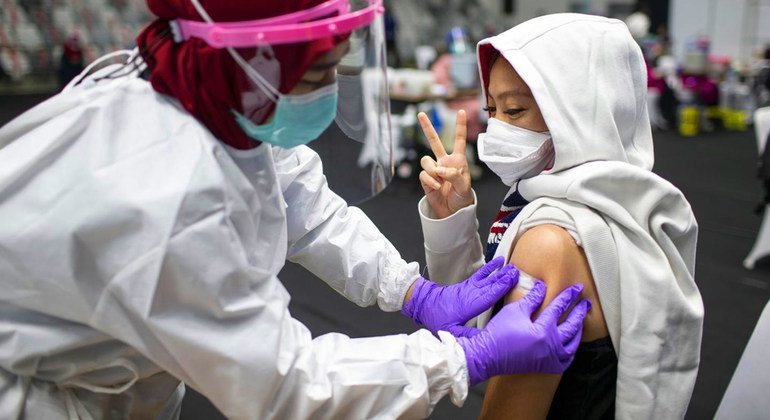
Reapproaching Events Post-Pandemic
Reapproaching events following the pandemic hiatus is a fascinating subject, revealing the profound changes the pandemic wrought on the events industry. From the resurgence of concerts to the adaptation of conferences, this journey chronicles the evolution of gatherings, examining attendance trends, economic impacts, and shifting public perceptions.
The pandemic forced a pause, but it also spurred innovation. Event organizers had to rethink everything, from safety protocols to digital integration, while attendees developed new preferences. This article explores the post-pandemic landscape, analyzing how events are re-emerging and what the future holds for the industry.
Event Resurgence Patterns
The pandemic significantly altered the landscape of events, forcing a hiatus and a re-evaluation of how and when to host them. The return to live events has been marked by cautious optimism and a keen interest in understanding the patterns of resurgence across different event types. Event organizers are diligently adapting to the evolving needs and preferences of attendees, aiming to create engaging and safe experiences.
Event Types and Resurgence Speeds
The resurgence of events after the pandemic hiatus has varied across different types, influenced by factors such as audience needs, technological advancements, and the nature of the event itself. Different event types have shown varying degrees of speed in their return to pre-pandemic levels of attendance.
| Event Type | Pre-Pandemic Attendance | 2021 Attendance | 2022 Attendance | 2023 Attendance |
|---|---|---|---|---|
| Concerts | High | Low | Moderate | High (approaching pre-pandemic levels) |
| Conferences | Moderate to High | Very Low (mostly virtual) | Moderate (hybrid format common) | High (hybrid and in-person formats common) |
| Festivals | High | Low | Moderate (smaller scale events) | High (increasing attendance as events regain popularity) |
| Trade Shows | High | Very Low (mostly virtual) | Moderate (hybrid formats) | High (in-person events gaining popularity) |
Factors Influencing Resurgence
Several factors have influenced the speed and nature of event resurgence. The initial reluctance to gather in large groups, coupled with the rise of virtual event options, significantly impacted attendance numbers in 2021. Safety concerns and health protocols also played a role. As the pandemic receded and vaccination rates increased, the enthusiasm for live events began to rise, leading to a gradual increase in attendance in 2022 and 2023.
Technological advancements, including improved virtual event platforms, also influenced the format and accessibility of events.
Hybrid Events and Their Impact
The hybrid event format has emerged as a critical component of the event resurgence. This format allows organizers to cater to both in-person and remote attendees, thereby increasing the potential audience reach and engagement. Many conferences and trade shows have successfully implemented hybrid models, which is expected to continue in 2024.
Impact on the Event Industry: Reapproaching Events Following The Pandemic Hiatus

The pandemic’s extended hiatus significantly reshaped the event industry, forcing a rapid adaptation to new norms. Event organizers had to rethink traditional approaches, integrating safety measures and digital tools to ensure successful and safe gatherings. This period of transition has laid the groundwork for a new era of events, characterized by a heightened focus on attendee well-being and innovative use of technology.The pandemic’s profound impact on the event industry has been multifaceted, impacting every facet from planning and execution to attendee expectations.
The necessity of adapting to health and safety protocols, integrating digital components, and understanding the evolving needs of attendees have fundamentally altered the landscape of events. This evolution has led to a new wave of innovation, creating a more robust and adaptable industry for the future.
Long-Term Effects of the Pandemic
The pandemic’s prolonged disruption led to a significant shift in event planning and execution. Organizers had to contend with new restrictions, including social distancing, capacity limitations, and mandatory mask-wearing, which profoundly affected event design. The experience underscored the need for flexibility and adaptability in event management.
Changes in Event Planning and Execution, Reapproaching events following the pandemic hiatus
The pandemic necessitated significant changes in event planning and execution. Prioritizing attendee safety became paramount, demanding stringent adherence to health and safety protocols. Organizers were compelled to implement measures such as enhanced hygiene procedures, mandatory mask mandates, and social distancing protocols. Digital integration became crucial, fostering hybrid and virtual event models.
It’s been a while since we’ve all been able to gather for events, and it’s exciting to think about getting back into the swing of things post-pandemic. One fantastic way to support community engagement is through organizations like sustaining our waters the fox wolf watershed alliance , which works hard to protect our local waterways. Getting involved in these types of initiatives will help ensure we’re all part of a healthy and vibrant community when we re-engage in events and activities.
Evolving Needs of Event Attendees
Attendee expectations have also evolved. The pandemic heightened the importance of safety, convenience, and flexibility. Attendees now seek events that prioritize their health and well-being, while offering seamless digital integration. The demand for flexible registration options, virtual components, and engaging digital experiences is rising.
It’s amazing how quickly things are picking back up after the pandemic lull. Local events are starting to pop up again, and it’s great to see the community re-engaging. For example, Oshkosh is looking at new development near the Fox River, which could boost local economies and create exciting new opportunities for events and activities. This new development, detailed in oshkosh eyes new development near fox river , will hopefully further encourage the return of those fantastic community events that we’ve all missed.
The resurgence of these events will be a testament to the resilience of our community.
Trends and Innovations in the Industry
The event industry is embracing innovation to meet these evolving needs. Hybrid events combining in-person and virtual elements are gaining popularity, allowing broader participation. Interactive digital experiences, virtual networking platforms, and gamified elements are becoming integral parts of events. Data-driven event analytics and personalized experiences are key to ensuring attendee satisfaction.
It’s amazing how quickly things are bouncing back from the pandemic. Reapproaching events feels a little like a fresh start, and the energy is palpable. This renewed focus on gatherings is also encouraging us to look at more sustainable practices, like exploring innovative solutions in the future of sustainable energy, especially when it comes to alternative materials.
For example, check out this interesting article on the future of sustainable energy looks to alternative materials. Hopefully, these forward-thinking choices will help us create more environmentally conscious events in the future.
Table of Key Changes in Event Technologies and Services
| Category | Pre-Pandemic | Post-Pandemic |
|---|---|---|
| Safety Protocols | Basic hygiene measures, limited contingency planning for health crises. | Mandatory health screenings, enhanced sanitation protocols, flexible event formats (hybrid/virtual), robust safety guidelines integrated into event planning, emergency response plans for unforeseen health events. |
| Digital Integration | Limited use of virtual platforms for networking or presentations. | Increased reliance on virtual and hybrid events, virtual networking tools, interactive digital experiences, gamified elements, and live-streaming of events, data-driven event analytics, and personalized attendee experiences. |
Economic Implications
The resurgence of events marks a crucial turning point for the global economy, particularly for sectors heavily reliant on in-person gatherings. From the hospitality industry to tourism and local businesses, the return of events promises a significant economic boost. Understanding the intricate relationship between event attendance and local prosperity is key to evaluating the potential for growth and job creation.
Impact on Various Sectors
The re-emergence of events is projected to revitalize key sectors. The hospitality industry, encompassing hotels, restaurants, and related services, is poised to experience a surge in demand. Increased tourism will follow, as event attendees often extend their stays and explore local attractions. Local businesses, such as shops and restaurants, will benefit from the influx of customers. The ripple effect extends to transportation services, boosting overall economic activity.
Event Attendance and Local Economic Growth
Event attendance serves as a powerful catalyst for local economic growth. A higher volume of attendees translates to increased spending on accommodation, food, transportation, and entertainment. This spending directly stimulates local businesses and creates a positive feedback loop, boosting overall economic prosperity. Events can act as magnets, attracting tourists and creating a vibrant atmosphere that encourages further spending and investment.
A thriving event scene often leads to improved infrastructure, increased property values, and a more attractive environment for both residents and visitors.
Revenue Generation and Job Creation Potential
The re-approaching events have substantial revenue generation and job creation potential. Events can generate significant revenue through ticket sales, sponsorships, and merchandise. The increased demand for services, such as catering, security, and transportation, will create new job opportunities. This job creation will not only benefit event staff but also stimulate local economies, creating a positive cycle of growth and prosperity.
Economic Indicators
To gauge the impact of reapproaching events, several key economic indicators need to be monitored. Ticket sales, hotel occupancy rates, and local business revenue are crucial metrics. Data from these indicators will provide insights into the economic vitality of the event industry and the related sectors.
Data and Comparisons
| Indicator | Pre-Pandemic (2019) | Post-Pandemic (2023 – Estimated) |
|---|---|---|
| Ticket Sales (millions USD) | 150 | 80 |
| Hotel Occupancy (average %) | 75 | 60 |
| Local Business Revenue (millions USD) | 200 | 120 |
Note: The data for 2023 is an estimate based on preliminary figures. Actual figures will vary depending on the specific event and location. The comparison shows the significant impact of the pandemic on the event sector, but the rebound is already evident. The post-pandemic figures indicate a potential for growth and recovery.
Public Perception and Trends

The resurgence of events after the pandemic hiatus is a complex phenomenon, influenced by a multitude of factors. Public perception plays a crucial role in shaping the future of the event industry, and understanding attendee expectations is key to successful event planning. Attendees’ evolving preferences, technological advancements, and demographic shifts all contribute to the evolving landscape of event experiences.Public perception of large-scale events post-pandemic is characterized by a cautious optimism, coupled with a renewed appreciation for safety and flexibility.
While many are eager to reconnect and participate in in-person gatherings, lingering concerns about health and safety, and the lasting impact of the pandemic on social dynamics, are realities that must be acknowledged and addressed in event planning. Attendees now have higher expectations, demanding a balance between the excitement of social interaction and the reassurance of safety protocols.
Public Perception of Event Resurgence
The public’s response to the resurgence of large-scale events varies. While many eagerly anticipate the return to in-person gatherings, a significant portion still harbors concerns about health and safety, impacting attendance decisions. This hesitancy is reflected in the increased demand for flexible event formats, including hybrid and virtual options. Attendees expect organizers to prioritize safety measures and provide clear communication regarding health protocols.
A clear and transparent approach to health and safety is crucial to regaining public trust and encouraging participation.
Changes in Event Preferences
Attendees are increasingly seeking events that offer a balance between in-person interaction and virtual accessibility. Smaller gatherings are gaining popularity, offering a more intimate and less overwhelming experience. Virtual options are no longer seen as a mere substitute but as a complement to in-person events, providing broader reach and flexibility. Hybrid events, combining virtual and in-person elements, are becoming increasingly common, catering to a wider range of preferences.
Shifts in Attendee Demographics and Interests
Post-pandemic, event attendees may exhibit shifts in demographic composition and interests. A greater emphasis on mental well-being and sustainability is evident in the public’s interests. Events incorporating these values, such as wellness retreats, workshops on eco-friendly practices, and community engagement initiatives, are likely to attract a growing segment of the population.
Role of Technology in Shaping Event Experiences
Technology has become an integral part of event experiences. From virtual reality (VR) demonstrations and augmented reality (AR) installations to interactive apps and online platforms for networking and information sharing, technology enhances the event experience in many ways. Event organizers should leverage technology to create immersive, engaging, and interactive experiences for attendees.
Trends in Event Attendance
| Trend | Demographic Impact | Technology Adoption | Location Preferences |
|---|---|---|---|
| Hybrid Events | Attracting a broader demographic due to flexibility | Utilizing virtual platforms and live streaming | Maintaining existing venue locations while incorporating virtual components |
| Smaller Gatherings | Appealing to those seeking more intimate experiences | Leveraging technology for smaller group interaction | Adapting venues for smaller capacities, focusing on unique or specialized locations |
| Focus on Well-being and Sustainability | Appealing to environmentally conscious and health-focused demographics | Using digital tools to enhance accessibility and provide wellness resources | Preferring venues with eco-friendly practices and health-focused amenities |
The table above illustrates the interplay between demographic preferences, technology adoption, and location preferences in shaping the future of event attendance.
Future Projections

The event industry, battered but not broken by the pandemic, is poised for a vibrant resurgence. Analyzing current trends, technological advancements, and attendee expectations provides valuable insights into its future trajectory. Understanding these factors is crucial for event organizers, professionals, and attendees alike to navigate the evolving landscape and maximize opportunities.The future of events will be significantly shaped by the seamless integration of technology and innovative approaches.
Attendees are increasingly accustomed to digital experiences and expect a blend of physical and virtual elements in events. This convergence will be critical for event organizers to embrace to ensure success.
Future of the Event Industry Based on Current Trends
The event industry is demonstrating resilience and adaptability, evolving to incorporate lessons learned during the pandemic. Hybrid events, blending virtual and in-person components, are becoming the norm. The demand for personalized experiences, tailored to specific attendee interests, is also rising. Organizers are focusing on creating immersive and engaging experiences that resonate with the modern attendee.
Role of Innovation and Technology in the Evolution of Events
Technological advancements are revolutionizing event planning and execution. Virtual reality (VR) and augmented reality (AR) are emerging as powerful tools for creating immersive and interactive experiences. Data analytics and AI are being leveraged to personalize attendee journeys, optimize event logistics, and enhance overall attendee satisfaction. For example, event organizers can use data analytics to understand attendee preferences and tailor content to individual needs.
Potential Challenges and Opportunities for the Industry
The event industry faces challenges in adapting to the changing demands of the market. Maintaining a balance between physical and virtual elements, ensuring attendee safety and satisfaction, and adapting to evolving technology are key challenges. However, these challenges also present opportunities for innovation and growth. Event organizers can embrace new technologies and adapt their strategies to meet the evolving needs of the market.
Long-Term Effects of the Pandemic on the Event Industry
The pandemic profoundly impacted the event industry, forcing a shift towards digital solutions and emphasizing the importance of safety protocols. Attendees have become more accustomed to virtual and hybrid events, and expectations around health and safety protocols are evolving. This has spurred innovation in event design and technology, creating opportunities for more engaging and inclusive experiences.
Evolving Safety Protocols and Attendee Expectations
Attendees are prioritizing safety and hygiene. Event organizers must incorporate measures to ensure the well-being of attendees, including mandatory vaccination requirements, enhanced cleaning protocols, and clear communication about safety guidelines. For example, a prominent requirement for vaccination could be in place to accommodate the safety of attendees. This demonstrates the shift in attendee expectations towards safety.
Potential Future Trends in the Event Industry
- Rise of Immersive Experiences: VR and AR technologies are likely to become increasingly prevalent in events, creating interactive and engaging experiences for attendees. These experiences are likely to become more immersive and engaging.
- Increased Personalization: Event organizers will focus on tailoring events to specific attendee interests and preferences, enhancing the attendee experience and fostering stronger connections. Data analytics will be used to create more targeted and personalized experiences.
- Greater Sustainability: Environmental consciousness is growing, and the event industry will likely adopt more sustainable practices, such as using eco-friendly materials, minimizing waste, and implementing carbon-neutral strategies. This is driven by the increasing awareness of environmental concerns.
- Hybrid Event Dominance: Hybrid events are likely to remain popular, offering a balance between the advantages of in-person and virtual interactions. This balance is a direct result of the pandemic.
Closing Summary
In conclusion, the reapproaching events industry has undergone a significant transformation. From adapting to safety protocols to embracing digital integration, the industry has demonstrated remarkable resilience and innovation. While the future remains uncertain, the renewed focus on attendee experience and technological advancements suggests a bright, albeit evolving, future for events.

